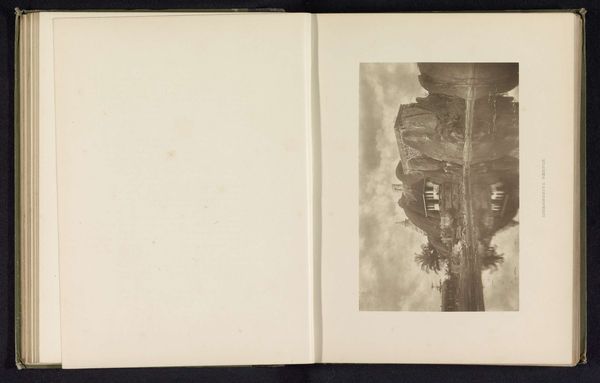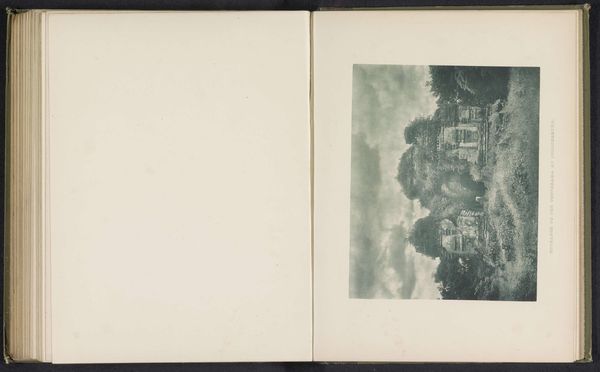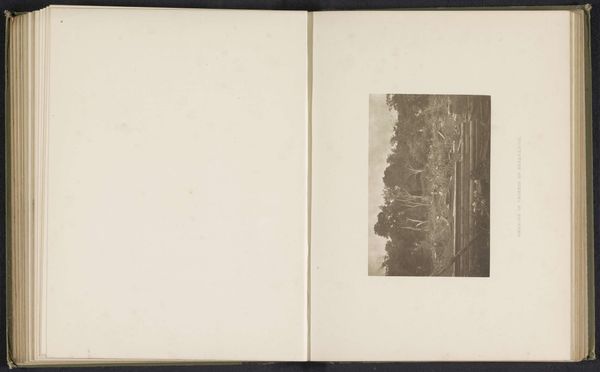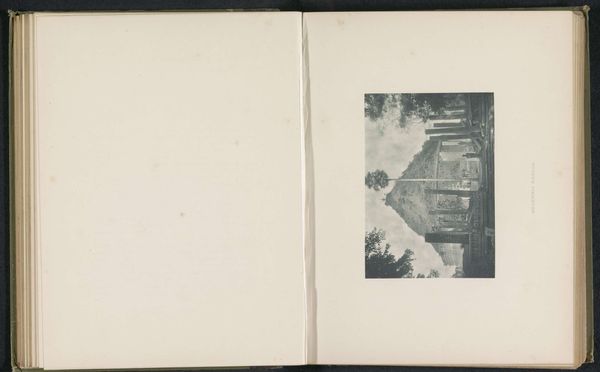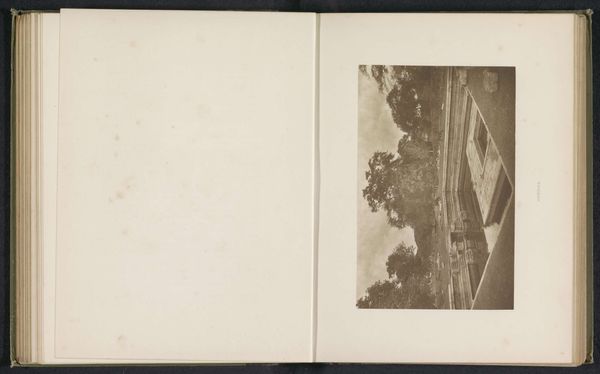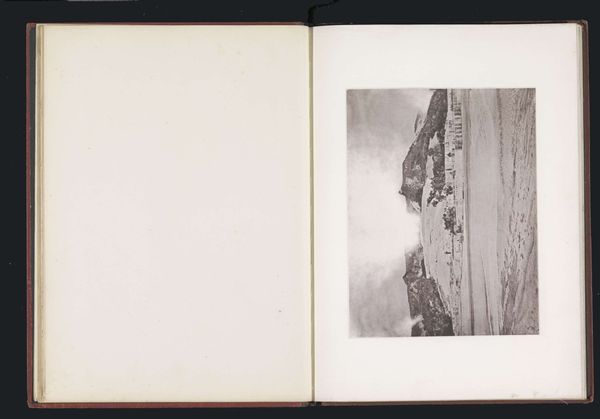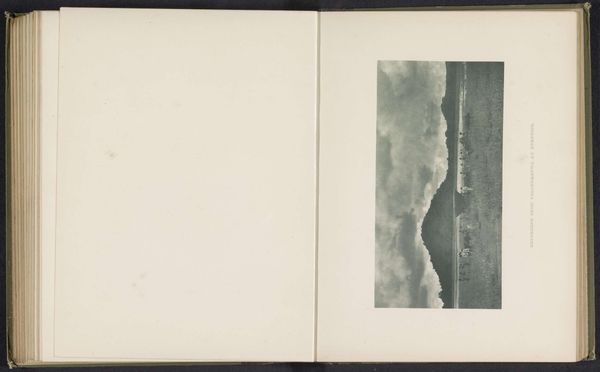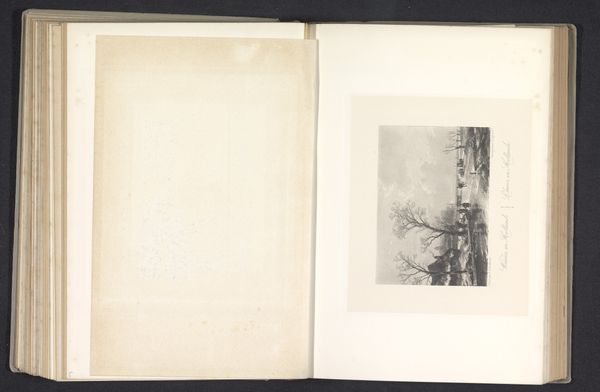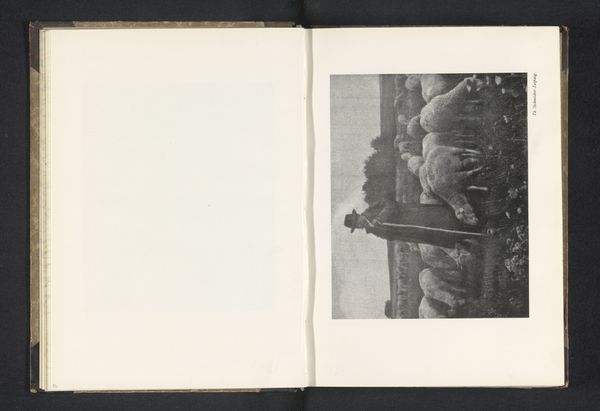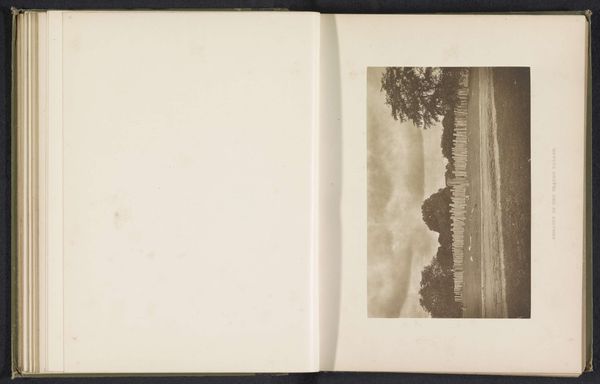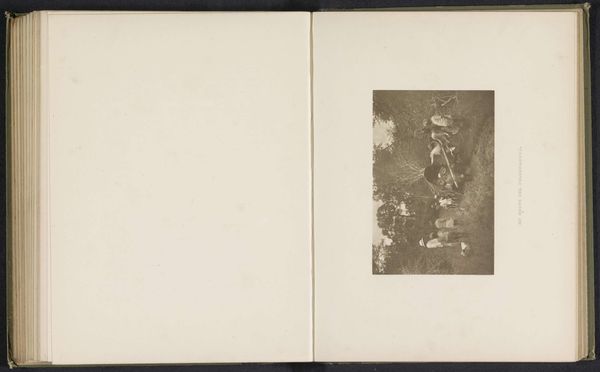
photography, gelatin-silver-print
#
landscape
#
photography
#
ancient-mediterranean
#
gelatin-silver-print
Dimensions: height 124 mm, width 195 mm
Copyright: Rijks Museum: Open Domain
Curator: This gelatin-silver print by Henry William Cave, titled "Remains near the Ruanweli dagaba," offers a glimpse into Sri Lanka's ancient past around 1896. What's your first reaction to this landscape? Editor: An atmosphere of dignified decay, definitely. The composition directs my gaze through a corridor of standing pillars into something majestic, something now lost but rendered eternal through this picture. It almost feels elegiac. Curator: Yes, it certainly possesses a certain gravitas. The Ruanweli dagaba itself, a massive stupa, would have been a site of immense religious and political importance, and Cave’s photograph hints at that. He doesn’t focus on the full structure but chooses instead to frame these crumbling remains. In many ways, photography itself helped to disseminate and almost 'claim' ancient Buddhist culture in colonial Ceylon. Editor: That’s fascinating. I can see how Cave, as a Western photographer, may have approached the site with a perspective influenced by Orientalist views of the East, one that emphasized exoticism, mystery and ruins. We often overlook how those historical depictions still subtly inform our views even now. Who held power then, and whose stories were overlooked? That's what photography invites me to ask. Curator: A valid point indeed. The colonial context is undeniable. At the same time, there’s also a reverence in the way Cave captures the scene; a clear desire to preserve a visual record of this ancient heritage. The soft light, the deliberate composition…there's an emotional investment there, it appears to me, and some may interpret that as admiration, or as a form of claiming. Editor: Right. So much is caught within the image! The shadows dancing around fallen stones. The quiet stillness despite the scale. For me it suggests both the grandeur that once was and a reminder of time's unrelenting passage. It challenges me to think about legacy – what we choose to preserve, what fades away, and the layers of power and memory embedded within these ancient landscapes. Curator: I completely agree. A poignant reflection, offering perspectives through decay to ponder our place in the stream of time. Thanks for sharing your reflections.
Comments
No comments
Be the first to comment and join the conversation on the ultimate creative platform.
